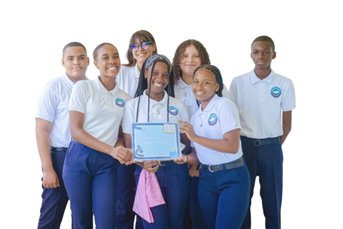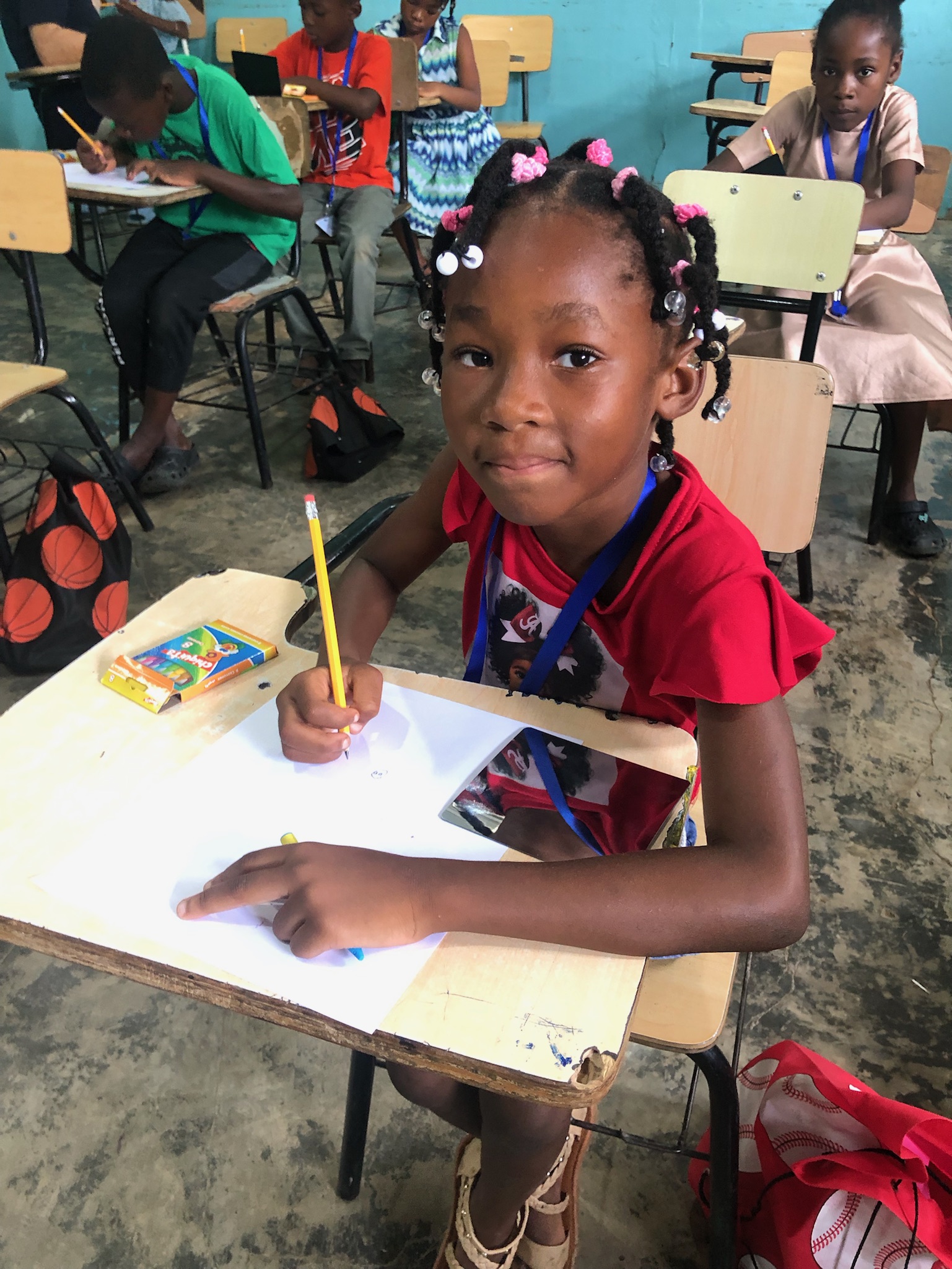Published Mon, Oct 20, 25.
Written by Sondra Dellaripa.
Rising Together: A Vision for Education, Vocation, and Transformation in Juan Tomas, Dominican Republic
FOUNTAIN OF LIFE HIGH SCHOOL EXPANSION
The School’s Journey So Far
Fountain of Life School was born from a vision rooted in love and justice—a desire to bring quality Christian education to a marginalized community. Over two decades, the school has grown from a small primary campus to a thriving K-12 institution, serving over 450 students. The school is operated by FUDESA, with oversight and support from international partners including Partners in Christ.
Vocational Education: A Bridge to Hope
Many of Fountain of Life’s students graduate with excellent grades. But even with high academic performance, some families simply cannot afford university. That’s where the vision for vocational education becomes a game-changer.
With new vocational tracks like nursing assistant, construction trades, culinary arts, and IT, students will gain real-world competencies that lead to employment—while keeping doors open to pursue higher education later.
“In the morning, we work with their souls,” a leader explained. “In the afternoon, we equip them with skills for life.”
The program even aims to integrate with the school’s existing medical clinic, allowing students to assist and observe in a healthcare environment. This is the school’s unique way of forming a “school within a school”—one that cares for the whole child: spiritually, academically, and practically.
This is not a school where students simply memorize facts and move on. It is a place where young people discover who they are in Christ, develop critical thinking skills, and prepare to lead within their community and beyond.
As one leader put it, “The biggest impact is the salvation that we are offering them through Christ. That is what changes lives here.”
The school’s unique blend of academic excellence, spiritual formation, and community engagement is producing tangible results:
- Over 60% of seniors graduate with a GPA of 90 or higher
- English fluency by 8th grade opens global job opportunities
- Alumni now lead in churches, clinics, businesses, and nonprofits
- Parents—once uninvolved—are now active participants and supporters
- Graduates who stay in Juan Tomas are reshaping the culture through service
But with growth has come growing pains.
The Capacity Challenge
Currently, the school’s infrastructure is stretched to its limits. High school students and teachers are navigating a fragmented campus. Science labs are located behind the church. Teachers rotate between disconnected spaces. Instructional time is lost daily to transitions and setup. Students move between buildings for different classes, wasting precious time and diminishing the sense of learning continuity.
“When you’re moving equipment and kids and trying to get settled, you lose 10 to 15 minutes of class time,” said one school leader. “And that’s every class, every day.”
More than just inconvenience, this logistical reality is a roadblock to deeper learning, teacher wellness, and efficient school operations.
What the Expansion Will Accomplish
The expansion of the third floor is not a new idea. It was part of the original design for the high school building, which was engineered to hold four floors. Now, completing that vision is the smartest, most cost-effective path forward.
Why This Work Matters to the Community
Transforming More Than Students
The ripple effect of the school’s impact reaches far beyond its gates. When a student succeeds, families are strengthened, churches are revitalized, and communities grow in self-reliance.
“People used to wait for others to help them,” shared one local leader. “Now they ask, ‘How can I help someone else?’ That’s the change this school has brought.”
Fountain of Life is raising up a generation of problem-solvers, servant leaders, and faithful citizens. English fluency allows students to access higher-paying jobs. Vocational training equips them to build businesses or find work immediately after graduation. And Christian formation grounds them in values of justice, humility, and love.
But, this project is not just about a building. It’s about building people.
Vocational Education as a Gospel Opportunity
One of the boldest parts of this expansion is the integration of vocational training. And the timing could not be more urgent.
Many students—though academically successful—face a familiar roadblock: poverty. Even top-performing graduates cannot afford university. For these students, a trade skill becomes a bridge to sustainability.
- A young man trained in electrical work can begin earning wages immediately.
- A student with culinary skills may find work in restaurants or start her own catering service.
- A graduate trained as a nursing assistant can help staff rural clinics while studying further.
- A welder or carpenter is not only employable but also becomes an asset to the entire community.
And this is where the school’s holistic model shines. Students spend their mornings in spiritual formation and academic instruction. Afternoons are spent in labs and workshops, learning tangible, marketable skills.
This is discipleship through education. This is dignity in action.
The Goals of the Third Floor Project
Add Vital Space for Science & Computer Labs
Modern science and technology education requires hands-on engagement. With fully outfitted labs on the third floor, students will no longer have to cross campus or make do with outdated setups. They’ll work with real tools, experiment, problem-solve, and prepare for real-world careers in medicine, tech, and engineering.
Unify Teachers and Students
Currently, staff members are separated from students by location. The new floor will consolidate classrooms and teacher workspaces, allowing for better collaboration, ease of class transitions, and stronger relationships.
Launch Vocational Training Pathways
The third floor will house the beginning of the school’s new vocational education initiative. This includes hands-on training in fields like:
- Electrical systems and wiring
- Plumbing and building maintenance
- Welding and carpentry
- Culinary arts and hospitality
- Nursing assistant programs (connected to the school’s medical clinic)
Support Long-Term Campus Consolidation
The third floor is the next step in a 10-year campus master plan. Eventually, the goal is to house all learning—academic and vocational—on one unified site, reducing cost and increasing impact.
Faith at the Core
Everything at Fountain of Life flows from a deep commitment to the Gospel. Students pray, study scripture, and engage in service. Teachers are chosen not just for credentials but for their faith and calling. And the school remains an outreach arm of the local church, Iglesia Bíblica de Juan Tomás.
As partners in this work, we believe this is not just about funding a floor—it’s about building Kingdom capacity. It’s about helping young people discover their God-given purpose and thrive.
In the end, this expansion isn’t about square footage.
It’s about lives.
It’s about a teenage girl discovering she loves chemistry—and realizing she can become a lab technician.
It’s about a young boy learning to weld, who builds his first chair for his family and dreams of one day owning a shop.
It’s about parents showing up to parent-teacher conferences not just to ask, “How is my child doing?” but to say, “How can I help?”
It’s about the power of Christ-centered education to break generational cycles of poverty, dependency, and despair.
We are not just building a third floor. We are building up hope, faith, and futures.
How You Can Help
We are inviting mission-minded partners to prayerfully consider how they can support us in partnering with the Fountain of Life School in Juan Tomas.
- Give Financially: Sponsor a student, a teacher, or the school. Your monthly or annual gift covers teachers salary, curriculum development, special projects and more.
- Open up doors: Invite us to speak at your church, company, home, or school and help us share story!
- Raise us up in prayer: Pray for wisdom and perseverance for our school leadership. Pray for the students, especially those preparing to graduate. Pray for God’s provision to complete his work.

